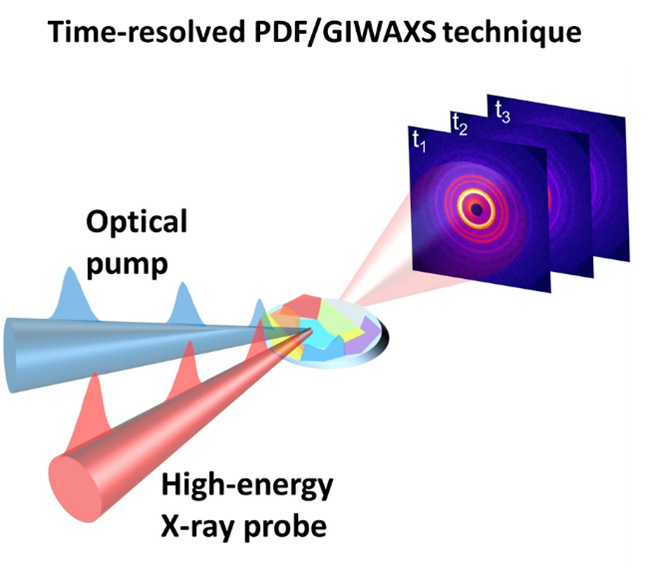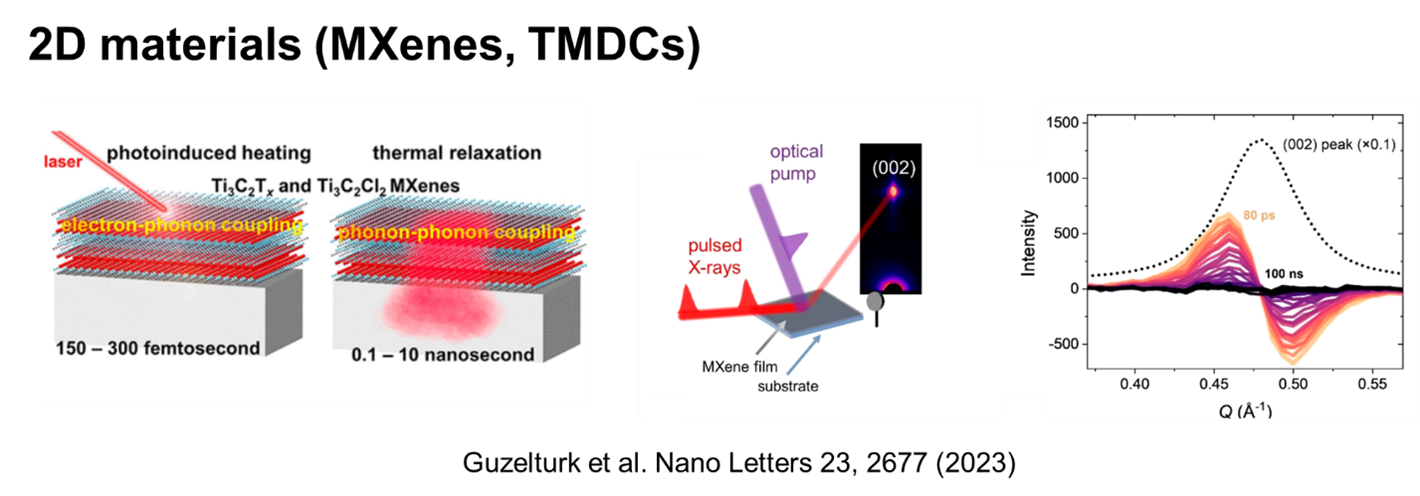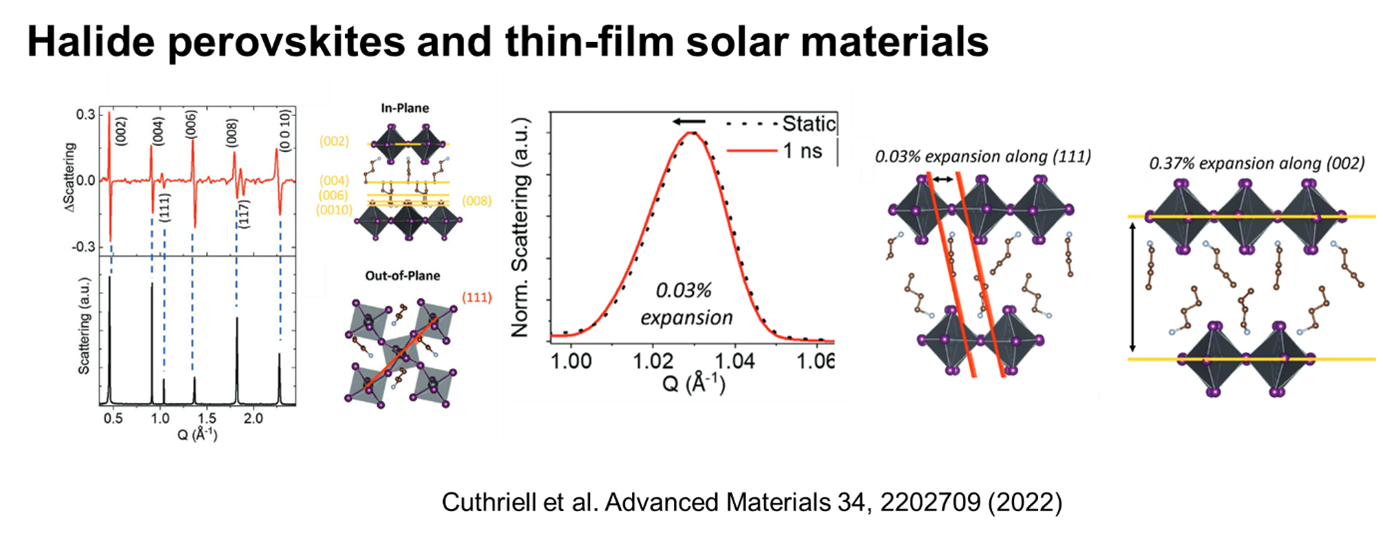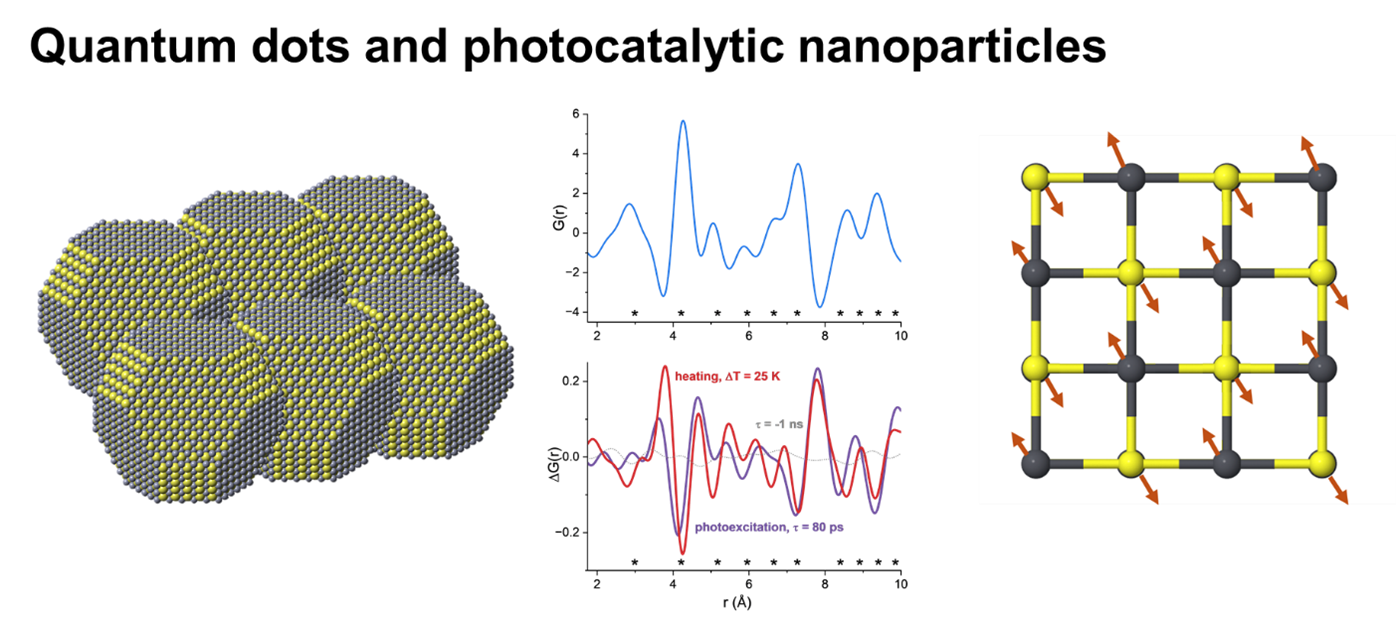The 7-ID-B station hosts a time-resolved X-ray scattering program targeted for studying light-matter interactions in solid polycrystalline, nanocrystalline, and amorphous sample forms. The primary experimental techniques are:  - TR-PDF: Time-resolved total x-ray scattering combined with atomic pair-distribution function
- TR-WAXS/TR-GIWAXS: Time-resolved wide-angle x-ray scattering
- In situ light and electrical-excitation PDF/GIWAXS
The scientific applications enabled by this research include: - Time-resolved structural dynamics in poly-, nano-cystal systems and amorphous materials (sub-nanosecond to microseconds)
- Light-induced lattice deformations
- Dynamics of polaron and defects under excited states
- Photothermal processes and thermal relaxations
- Ultrafast phase changes
- In situ structural probing of light and electrical excitation induced effects (microsecond to seconds)
 - In situ device characterization (solar cells, photocatalytic systems)
- Access to buried layers with x-ray scattering
7-ID-B formerly hosted facilities for imaging fuel sprays and liquid jets, which are reflected in the publications listed below. |
Scattering is typically in a grazing or quasi-grazing geometry, with a Q range of 0.5 to 15 Å-1. Samples can be held on a spinner or at temperatures from 100 K to 500 K. Surface flow of an inert gas (N2) is also possible. We use a large-area silicon hybrid photon-counting detector, a Pilatus 2M from Dectris. Its quantum efficiency ranges from 90% around 10 keV to 10% at 35 keV. Laser excitation is by a Pharos laser combined with HIRO (higher harmonics unit) and Orpheus (OPA). Its nominal rep rate is 54 kHz (P0/5) but is tunable from P0/2 to 1 kHz. The fundamental is at 1030 nm (20 W or 371 µJ pulse energy at 54 kHz); pulse duration is 170 fs. Other options include AC and DC electrical biasing and excitation; broadband CW white light; and CW red and green lasers. |
- Revealing pMDI Spray Initial Conditions: Flashing, Atomisation and the Effect of Ethanol, Nicholas Mason-Smith, Daniel J. Duke, Alan L. Kastengren, Daniela Traini, Paul M. Young, Yang Chen, David A. Lewis, Daniel Edgington-Mitchell, and Damon Honnery, Pharmaceutical Research 34, 718 (2017).
- Effect of the number and position of nozzle holes on in- and near-nozzle dynamic characteristics of diesel injection, Seoksu Moon, Yuan Gao, Suhan Park, Jin Wang, Naoki Kurimoto, and Yoshiaki Nishijima, Fuel 150, 112 (2015)
- Unraveling the Geometry Dependence of In-Nozzle Cavitation in High-Pressure Injectors, K.-S. Im, S.-K. Cheong, C.F. Powell, M.-c.D. Lai, and Jin Wang, Scientific Reports 3, 2067 (2013)
- Ultra-Fast Phase-Contrast X-ray Imaging of Near-Nozzle Velocity Field of High-Speed Diesel Fuel Sprays, Z. Liu, K.-S. Im, X. Xie, Yujie Wang, Xusheng Zhang, Seoksu Moon, Jian Gao, Kamel Fezzaa, M.-C. Lai, Kathy Harkay, Vadim Sajaev, Louis Emery, and Jin Wang, Proceedings of ILASS-Americas 22nd Annual Conference on Liquid Atomization and Spray Systems, Cincinnati, OH (May 2010)
- Particle tracking velocimetry using fast x-ray phase-contrast imaging, K.-S. Im, K. Fezzaa, Y.J. Wang, X. Liu, Jin Wang, and M.-C. Lai, Applied Physics Letters 90, 091919 (2007)
|





